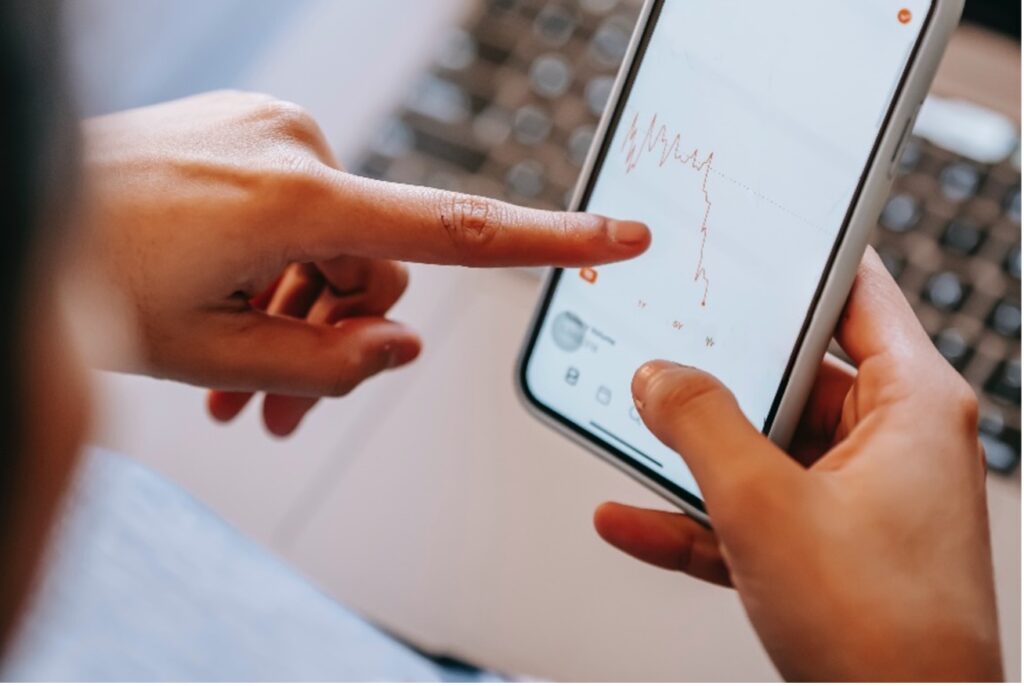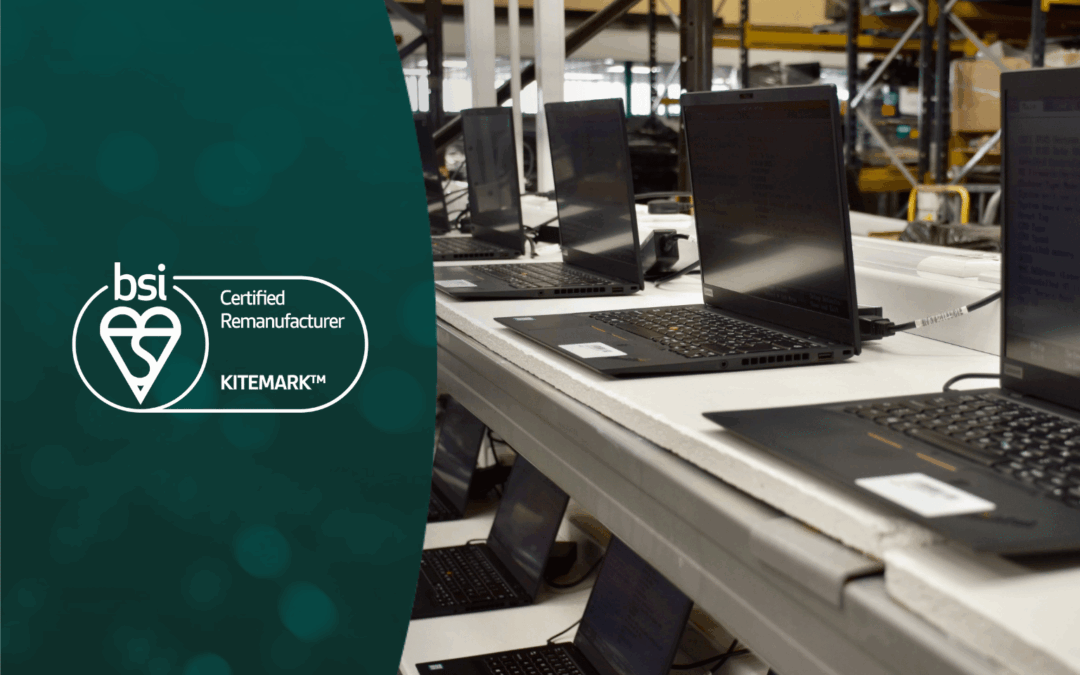No doubt you’ll have heard how a new car depreciates by 30% as soon as you drive it off the showroom forecourt. * Worst still, according to the AA, by the end of the first year, your new vehicle will have lost around 40% of its original value.
New cars are notorious for their staggering rate of devaluation, but capital asset depreciation rates are accelerating across the board; this includes our businesses’ IT devices as technological advancements develop at pace.
Electronic equipment of almost any kind can lose anywhere between 30% – 70% (or more) of its value in less than a year.
Tech Junkie.
When it comes to our business technology inventory, how do you depreciate technology when its ‘value’ can be considered in different ways by different departments? The CFO will only be concerned with the reduction in financial value, whereas the CIO will most likely assess an asset’s value in terms of its functionality and impact on overall productivity. That said, in today’s financial climate, decreasing budgets and rising demand means that an increasing number of IT teams are recognising the used market value of their end-of-life IT assets.
Assessing the right time to replace redundant IT equipment has never been an easy judgement to make with so many contributing factors.
Therefore, many organisations continue to follow the traditional accountancy depreciation models; disposing of usable assets once it has reached a value of zero. This has resulted in relatively short, IT asset upgrade cycles every 3-4 years, on average. However, without monitoring and taking current devaluation rates into account, it is near impossible to judge the optimum time to replace business technology with any real accuracy.
What is the standard depreciation rate for IT equipment? How can you calculate this to maximise productivity, ROI and lifetime value?

What is asset depreciation?
It stands to reason that the more you use something, and the older it gets, the less valuable it becomes. ^
Asset depreciation allows businesses to report their finances, fairly and accurately. ^ The speed at which a device loses value is ascertained using four key factors; purchase price, useful lifespan, residual value and whether it might be considered obsolete. +
Free online asset depreciation calculators can be a useful tool to help CIOs assess the rate of depreciation and when its best to refresh your IT inventory. Although, many of these work solely on a linear model.
How do you calculate depreciation for your IT assets?
Within accountancy, the two most common approaches are straight-line depreciation and the declining-balance method.
As you might expect, the straight-line technique considers that the value of a laptop or desktop decreases by the exact same amount each year the company owns it. Depreciation then compounds equally, annually. This can benefit businesses as the value depreciates at a steady rate whilst the device is contributing to revenue generation.
However, in reality, this is rarely the case. Much like a new car, a computer will lose a greater proportion of its overall value when it is newer, losing less as the device ages. The declining-balance curve model is therefore a far more accurate approach when assessing the devaluation of your organisation’s IT assets. *
How much does your business equipment depreciate each year when you use the straight-line method? Let’s take a standard specification business laptop with a rounded original price of £600, as an example.
For the first year, the original purchase price should be multiplied by 25%. # Then subtract this figure (£150) from the original device cost; which equals £450; this is the device’s value, after one year’s business use.
As this is a linear model, the same percentage should be subtracted from the previous year’s depreciated value. At the end of year two, the asset would be worth £300, £150 by the third year, and will be completely written off by the fourth.
Alternatively, a straight-line reducing balance method can be used to lower the depreciation rate by 25% per year. (Year one – 450, year two – £337.50, year three – 253.13 etc…year four – 189.84).
Our rapid digitisation drives tech industry advancements designed to help us boost competitive advantage, but this increases new device depreciation rates. For this reason, the declining-balance method can provide a more accurate scale for your organisation’s IT assets.
For this declining method, start with the purchase price, (£600), but times this by 40%, rather than 20 – giving a depreciation value of £240 at the end of the first year. Multiply by 40% once more and by the end of the second year, the device will only be worth £96.

How can you minimise asset depreciation?
Sustainable lifecycle management.
It’s no secret that productivity can take a hit as a machine begins to age, but regular lifecycle management and essential upgrades can significantly extend the lifetime value of not just the device, but its components too; minimising depreciation. Take data centre decommissioning as an example of a highly complex asset whose integral parts can be replaced without affecting functionality.
Upgrades provide a far more cost-effective way to boost productivity, without new devices needing to be manufactured. And as the vast majority of an asset’s carbon footprint is attributable to its manufacture and transportation, upgrading and redeployment will also contribute to your sustainable IT efforts.
Asset Recovery.
Any components removed also hold residual value. Following professional sanitisation using GDPR-compliant secure data erasure software, these can be redeployed, reused or where absolutely necessary, recycled. The precious metals used in the construction of circuit boards, in particular, can be processed and indefinitely smelted for reuse.
Strong market values are subsequently returned to the organisation. This often results in free IT asset disposal as the residual value is higher than any IT asset disposition services fee.
Although asset recovery can bring significant financial returns, this circular, environmentally friendly ITAD approach is not always an IT asset disposal method considered by enterprises. Despite guarantees by industry experts that this will present no future data security issues, a significant number of businesses continue to choose device destruction practices, such as data shredding or
Purchasing refurbished IT.
Leading IT asset disposal companies are no longer all solely focused on secure data erasure services, those taking a fully circular approach have their own IT recommerce outlets. Plus, if buying from one of the UK’s IT asset disposal services, you can be certain that your new equipment will not present any future data governance challenges. Having been professionally upgraded, A-grade refurbished IT assets are as good as new and have immediate availability. ITAD services can also hold stock for government, financial or healthcare institutions along with medium-large UK enterprises to call off for prompt equipment delivery, as and when needed.
Thinking back to that car analogy, a used model might come with a 142-point check, ** a 2-year warranty, 2 years MOT cover and a ‘no quibble’ guarantee – regardless of price or condition, everything should work as it should. A renewed IT device is no different with quality, performance upgrades and system checks the top priority. This is usually backed with a 1-year warranty, as standard.
Critically for businesses, renewed assets are up to 80% cheaper than brand-new machines. ^^ When it comes to depreciation metrics, these assets will devalue at a far slower rate. Even if there is the budget for new units, why would IT departments spend more only to suffer the impact of higher depreciation?

IT lifecycle management and depreciation modelling can vary substantially from company to company. Some may keep a laptop for 3-4 years before choosing to their sell redundant IT assets and many CIOs are capitalising on the operational and cost-efficiencies of a circular, refurbished IT procurement model. Other teams may choose sustainable component upgrades to maximise ROI, boost productivity, maximise lifetime value and reduce asset depreciation.
Corporate IT asset depreciation is an important IT metric to get right with accelerating devaluation rates for newer technology as we digitalise. Determining an accurate depreciation rate for your organisation will give a more precise evaluation of when is best to refresh your IT inventory, maximise company revenue and help you to operate more sustainably. #
*Tech Junkie, ^Tech Republic, +Top PR, #Contractor UK, **Volkswagen, ^^Signals IT.
A fully circular, environmentally friendly ITAD partner, tier1 Group provide sustainable lifecycle management, asset recovery, recommerce and data wiping services. Our professional team calculates and minimises your IT asset depreciation rate helping you to maximise lifetime value and save budget.
Far better for your pocket as well as the planet, our refurbished devices have short lead times, can be built to your exact specifications and come with a warranty of up to three years. As a Blancco Gold partner, every renewed asset comes with its own secure IT asset disposal accreditation certificate, demonstrating its ITAD chain of custody and ensuring the GDPR data destruction requirements have been met.
We are proud to be the most accredited ITAD supplier in the UK – To find out more, contact our friendly teams on 0161 777 1000 (Manchester), 01621 484380 (Maldon) or visit www.tier1.com
Resources.
The AA, Tech Republic, Tech Junkie, Smart Capital Mind, Exit Technologies, Chron, Refab, Signals IT, Volkswagen, Contractor UK, Top PR, ICalculator, Tech Radar.



